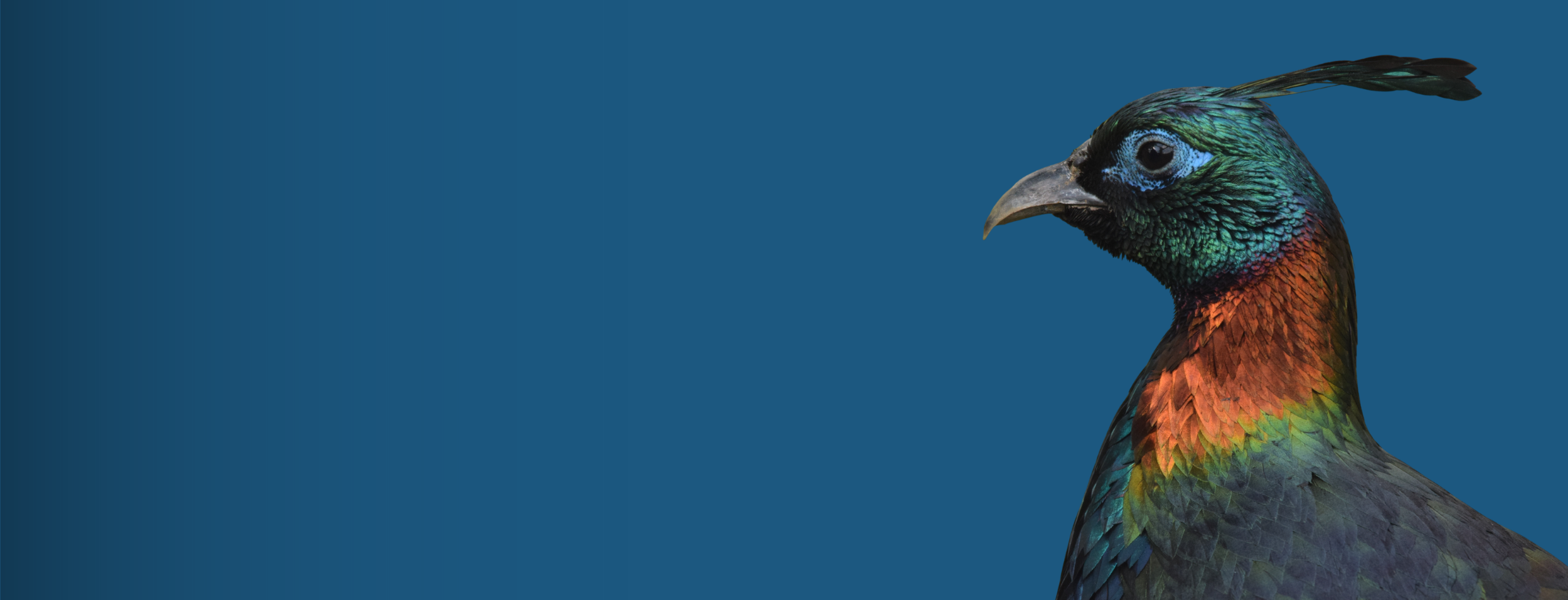
Collection Plan
Every bird, egg, and chick at Ripley Waterfowl Conservancy has been strategically planned and serves a vital role in our mission to preserve rare & endangered waterfowl species.
Himalayan monal (Lophophorus impejanus)
With increasing loss of habitat and threat to waterfowl species, it continues to put them at risk of extinction. Currently, around one-third of all wild waterfowl species are listed as threatened or endangered.
The Ripley collection has been carefully planned and is continuously monitored to maximize our impact. To ensure long term success, aviculturists must first consider species compatibility, cold tolerance, and husbandry methods before selections are made. Once it is determined that species are the right fit and will thrive at Ripley, the following criteria is used to make final selections:
Threatened and Endangered Status in the Wild
Maintaining genetically diverse populations of rare, threatened, and endangered species serves several fundamental purposes for conservation. Safeguarding irreplaceable genetics for if or more likely when these species may go extinct in the wild ensures a viable source of individuals for future reintroduction programs. Captive flocks also provide opportunity for behavioral and ecological research of species that are rare in the wild and enhance educational opportunities which highlight the need for conservation
Rare and in Need of Breeding Efforts in Captivity
Just because a species is being managed in captivity, does not mean it is well represented or set up for long-term success. There are many species of at-risk birds in captivity, which are not being actively bred, are declining in numbers, aging, etc. all of which does not safeguard their genetics. Ripley puts emphasis on all species, and highlights those that need further management practices.
Species with Declining Population Trends that We Feel Are at Risk Both in the Wild and in Captivity
Most waterfowl populations are experiencing population declines which will continue as environmental pressures increase. Just because a species is not listed as Threatened today, does not mean it will not be in just a few short years. If we wait until population reach dramatic decline it is often too late. Ripley has remained proactive in its approach and puts emphasis on species we deem important before it is to late and works to increase awareness and maintain diverse captive populations.
Charismatic & Historically Important Species
Because Ripley is open to the public, it is important that we highlight all waterfowl and use charismatic species, such as the Mandarin duck, to educate our visitors about the importance of waterfowl conservation. These species also provide many important roles at the Conservancy such as incubating eggs of rarer species and fostering young.
Dillon Ripley’s interest in waterfowl and captive preservation led to the success of the first North American breeding for eight species and two subspecies of waterfowl. The majority of these species are currently considered to be threatened in the wild. The Conservancy maintains many of the species, such as the Red-breasted goose, that were first bred in captivity by Dillon Ripley, as a tribute to his dedication to establishing captive populations of vulnerable waterfowl.
See the Entire Collection
Looking for more information about the species in our current flock?




